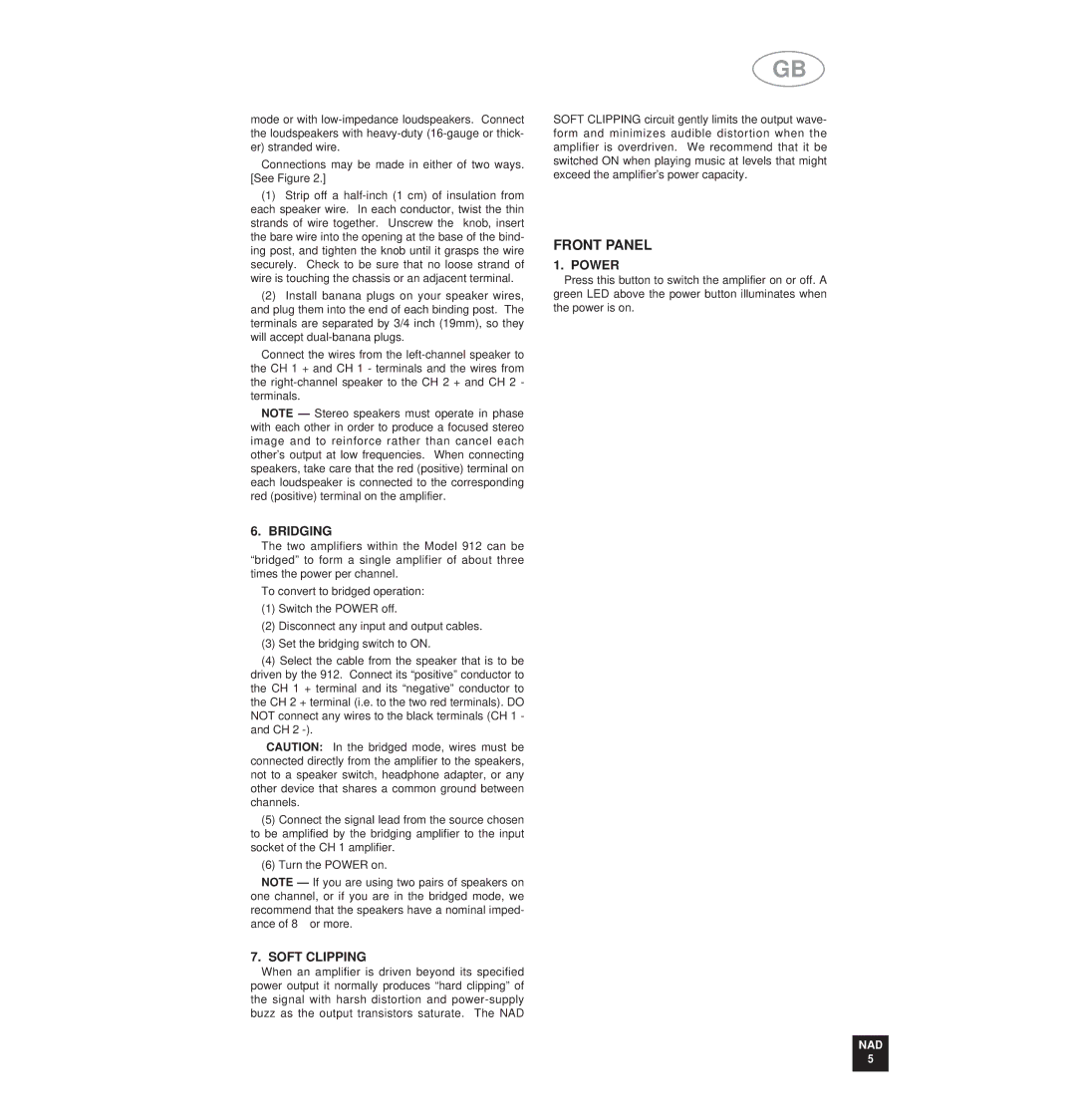912 specifications
The NAD 912 is a prominent piece of audio equipment renowned for its exceptional sound quality and robust performance. As part of NAD's celebrated lineup of audio products, the 912 is specifically designed to cater to the needs of audiophiles and music enthusiasts looking for a powerful amplifier that can enhance their listening experience.One of the main features of the NAD 912 is its powerhouse performance, boasting a significant output power that can drive even the most demanding speakers with ease. With a rated output of 100 watts per channel into 8 ohms, and the ability to drive lower impedance loads without compromising sound quality, the 912 ensures that music is delivered with clarity and authority across all frequencies.
The NAD 912 utilizes advanced technologies that set it apart from many of its competitors. Among these is the innovative PowerDrive technology, which allows the amplifier to deliver consistent power levels regardless of the load impedance. This ensures that the sound remains dynamic and punchy without introducing distortion even at high volume levels. NAD’s proprietary Soft Clipping feature further enhances the listening experience by allowing the amplifier to handle transient peaks smoothly, preserving musical integrity while preventing harsh clipping.
In addition to its robust power and performance capabilities, the NAD 912 incorporates a variety of input options, making it compatible with a vast array of audio sources. The back panel features multiple RCA inputs, allowing users to connect various devices such as CD players, turntables, and streaming devices. The inclusion of a rear speaker terminal facilitates easy connections to speakers, while the option for bi-wiring enhances connectivity and sound quality.
Another noteworthy characteristic of the NAD 912 is its build quality. Constructed with a solid chassis and high-quality components, this amplifier is designed to last and withstand the rigors of daily use. The sleek design not only adds to its visual appeal but also aids in heat dissipation, thereby promoting long-term reliability.
In conclusion, the NAD 912 stands out as a premium amplifier that combines high-performance audio engineering with user-friendly features. Its impressive output, advanced technologies, versatile connectivity options, and durable design make it an ideal choice for anyone looking to elevate their audio experience while enjoying the rich and detailed sound that NAD is known for. Whether used in a home stereo setup or as part of a larger audio system, the NAD 912 proves to be a worthy investment for discerning listeners.

